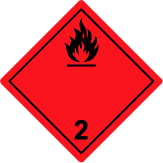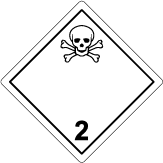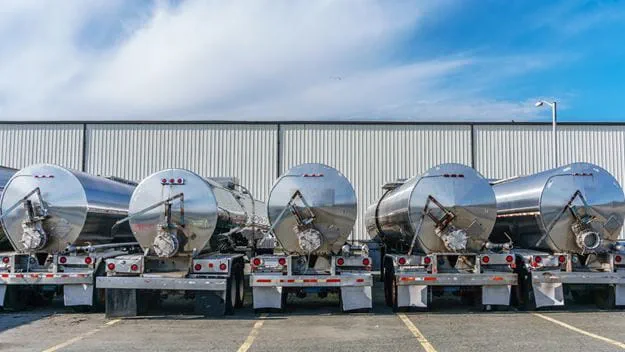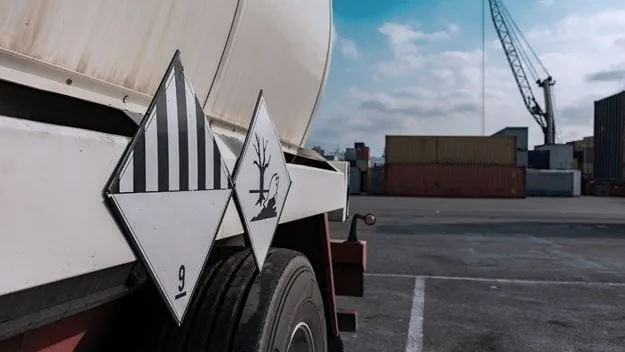Hazard class 2
Gases can be a pure gas or a mixture of one or more gases. They are defined by dangerous goods regulations as substances which have a vapour pressure greater than 300 kPa (3 bar) at 50°C, or which at a standard pressure of 101 kPa are completely gaseous at 20°C.
Substances and articles of Class 2 have been assigned to one of the following divisions:

Division 2.1
Flammable gas

Division 2.2
Non-flammable compressed gas
Division 2.3
Toxic gas
Subdivision of gases
Gases are sub-divided into compressed gases, liquefied gases, refrigerated liquefied gases, dissolved gases, aerosol dispensers and receptacles, other articles containing gas under pressure, non-pressurized gases subject to special requirements (gas samples), chemicals under pressure and adsorbed gas.Except for aerosols and chemicals under pressure, Class 2 gases are divided between the following groups according to their hazardous properties:
| A | Asphyxiant |
| O | Oxidizing |
| F | Flammable |
| T | Toxic |
| TF | Toxic, flammable |
| TC | Toxic, corrosive |
| TO | Toxic, oxidizing |
| TFC | Toxic, flammable, corrosive |
| TOC | Toxic, oxidizing, corrosive |
Reasons for regulation
Gases can pose serious hazards due to their flammability, potential as asphyxiants, ability to oxidize and/or their toxicity or corrosiveness.
Examples of commonly transported explosives
Examples for Class 2 dangerous goods are aerosols, compressed gas, fire extinguishers, refrigerant gases, lighters, acetylene, carbon dioxide, helium, hydrogen, oxygen, nitrogen, natural gas, petroleum gases, liquified, butane, propane, methane, ethylene.
You may also be interested in
Any questions?
Our experts are ready to help. Get in touch and we'll find the solution you need.




